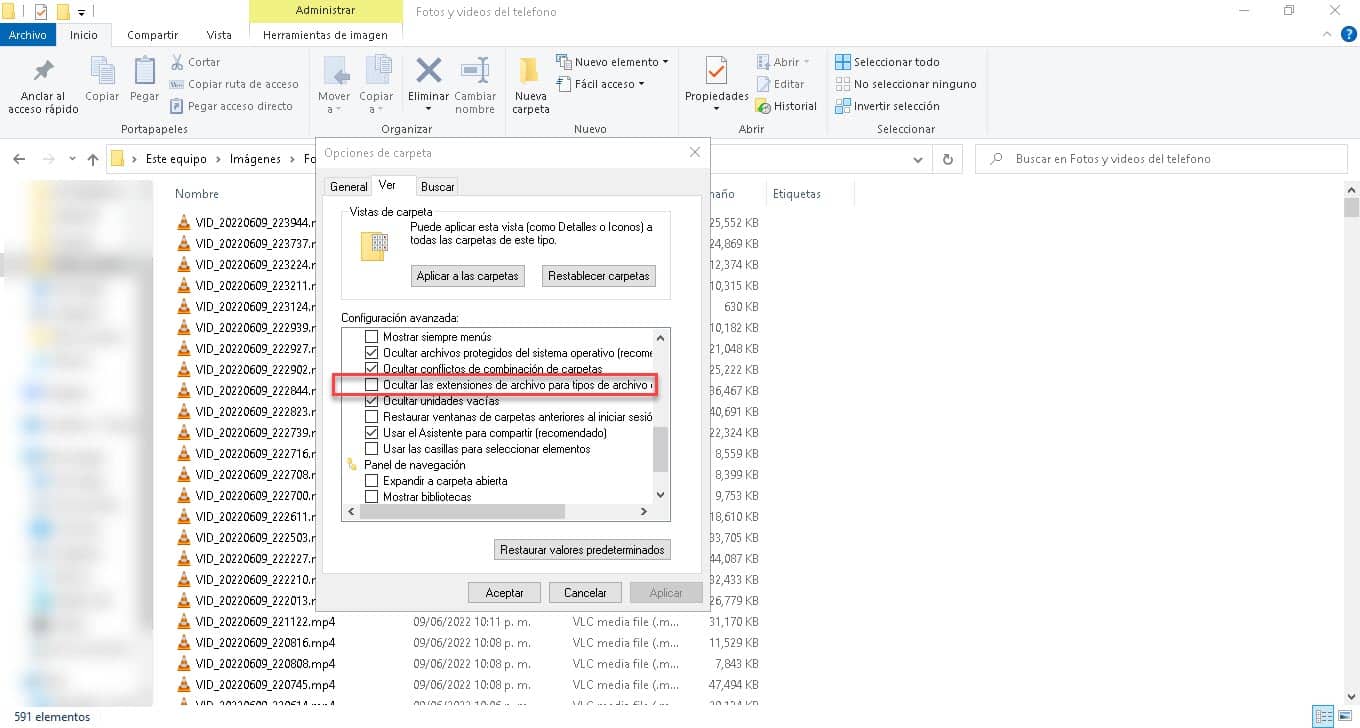
Windows has been on the road for more than 30 years, being the most popular operating system for computers on the market. This has meant that, by now, users are more than used to many concepts that must be handled within their environment. So, We are already used to working with some configurations, program installation and also the fact that the files are handled through different formats, which are reflected with the so-called extensions. But, if it is still something that you do not understand very well, do not worry, because here we are going to tell you everything you need to know about how to see and change the extension of a file in Windows.
This will allow you to solve problems such as having files that cannot be opened due to the wrong extension. Likewise, it will allow you to recover access to any document or file that we have downloaded and that for some reason did not have a defined extension.
What is a file extension?
Before getting into the subject of how to view and change a file extension in Windows, it is worth knowing specifically what a file extension is and what its function is. As we discussed earlier, the so-called file formats are handled in the operating system environment. A file format indicates the way the information in a file is organized and encoded to display correctly. In this way, we have, for example, various image formats with their own characteristics and particularities to display the information and also to package it.
There are dozens of file formats and to differentiate and identify themselves in the environment of operating systems, they need an extension. Thus, we can see MP3, WAV or WMA audio formats, where the acronyms in question function as their extensions. In this sense, the extension of a file is the label that indicates its format and therefore, the application or program that can open it.
How to see the extension of a file?
Generally, Windows systems have the display of file extensions disabled. However, you should know that it is totally possible to see this data, although for this we must enable the function from Windows Explorer. There are two ways to do it, so it will all be a matter of selecting the one that best suits your needs.
From Windows Explorer
The first way that we are going to show you to see the extension of a file in Windows is probably the fastest and easiest. Follow the steps below:
- Open an instance of Windows Explorer.
- Go to the «Vista» from the menu bar.
- Go to the section «Show or Hide«.
- Check the box «File name extensions"..

You will immediately see that the interface will update, showing the extensions of each of the files that you have stored on your computer.
From the Folder Options
This is the classic way to enable the view of extensions in Windows and the one we used until the arrival of Windows 10, when the option we saw previously was presented. To get to Folder options we have two paths.
The first one begins by opening an instance of Windows Explorer, and then clicking on the menu «Archive«. Then click on «Options» and immediately, the Folder Options window will be displayed. Now, to enable the display of the extensions in the interface, go to the tab «VIEW» and then go to the section Advanced settings. There you will see a whole series of options with checkboxes to enable and disable. Locate the one identified as "Hide file extensions for known file types» and uncheck it. Finally, click on «Accept«.

The other way to access the Folder options is through the option Run Windows. In that sense, press the key combination Windows + R and you will see a small window pop up. Right away, type the following command and press Enter: Control.exe Folders
How to view and change the extension of a file?
We can already see the extension of the files that we save on our computer, now, we are going to show you how to change it easily. Remember that this process will only be useful for those scenarios where a file does not have an extension or it has an incorrect one. In this sense, if what you want is a complete format change, it is best to resort to specialized applications for this task..
How to see and change the extension of a file in Windows is quite simple and to do this, you just have to select it, right-click and then go to «Rename«. This will give you the ability to edit the entire filename, including the extension, so delete the one after the dot and add whatever you think is appropriate to make it work. That will throw up a Windows message saying it could damage the file, go ahead and you'll have it with a new extension.